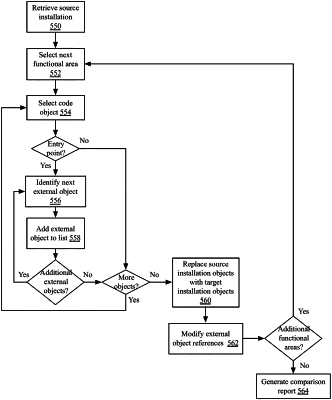| CPC G06F 8/64 (2013.01) [G06F 8/40 (2013.01)] | 36 Claims |

|
1. A method for entry point-based code analysis and transformation, comprising:
selecting, by an analysis agent executed by a processor of a computing device, a first functional area of a source installation of an application to be transformed to a target installation of the application from a plurality of functional areas of the source installation, each functional area comprising a plurality of associated code objects;
identifying, by the analysis agent, a first subset of the plurality of associated code objects of the first functional area having associations only to other code objects of the first functional area, and a second subset of the plurality of associated code objects of the first functional area having associations to code objects in additional functional areas, the second subset comprising entry points of the first functional area;
replacing, by a transformer executed by the processor of the computing device, the first subset of the plurality of associated code objects of the first functional area with first corresponding code objects of the target installation;
replacing, by the transformer, the second subset of the plurality of associated code objects of the first functional area with second corresponding code objects of the target installation;
identifying, by the analysis agent, at least one additional code object of a second functional area as associated with an entry point of the first functional area, wherein at least one of the first functional area or the second functional area are defined by a respective ratio of intra-area associations to inter-area associations; and
modifying the at least one additional code object of the second functional area, responsive to the identification of the at least one additional code object of the second functional area as associated with the entry point of the first functional area.
|